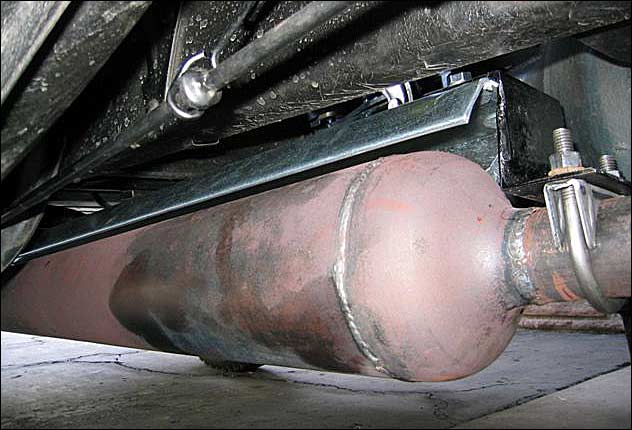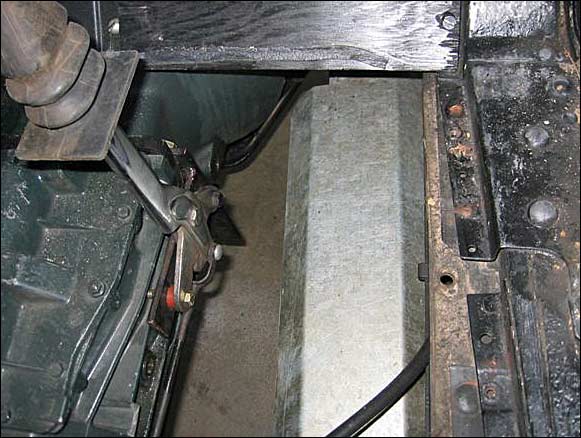.
Tired of HOTFOOTING It?
While cruising back from the National convention in Riverside, with the temperature well over 100 degrees, I noticed that my gas pedal foot was getting very hot, and I had to use the hand throttle to go the rest of the way. It made me wonder how many times we have heard that same complaint about hot feet from our front seat passenger, while cruising in the heat of a California summer. Like many others I have consideresd a number of solutions-- ranging from muffler shields and floorboard insulation to the firewall accessory manufactured to fit the Model A. While I have tried all or a combination of the above, in an attempt to make my driver's compartment as free from heat and noise as possible, I am going to restrict this article to our tests done on different mufflers and shields. Bob Travis and Bob Moore volunteered their sedans, as Travis had the Aries muffler and Moore had a stock replacement muffler. Most of the tests were going to be done on Travis’ sedan, but I wanted a reading off of Moore’s stock muffler for comparison. Both Bob Travis and Bob Moore had the commercially-available muffler shield already installed on their cars and I provided an alternate choice with a prototype of my newly-designed extreme-duty muffler shield. Having had a bracket failure on the currently-available shield, I had decided to improve on the design, and I conceived of creating the insulated shield which I subsequently built and am currently running on my own car. In the original shield, the sheet metal brackets which are made of the same gauge as the shield itself are spot welded and tend to crack, due to the flimsy nature of the design. If you have one of those on your car I would recommend checking for this problem, as Bob Travis’ shield had a serious crack in the rear bracket which I pointed out to him when we removed it for one of the tests. To eliminate this problem on the new shield, I am fabricating 1/8 inch steel brackets that are attached with 3/8 bolts. I also wanted to create a more efficient insulated shield by sandwiching a commercially-available heat-absorbing material between two pieces of sheet metal. Test
Devise The
Cars Surprisingly, when we started measuring the temperature off the muffler, which was always done at the front and rear seams, we noticed that when the engine was cold, the temperature was hotter than when the engine warmed up. This is due to the effects of scavenging. When the hot exhaust gases come into contact with the cold manifold, exhaust pipe, and then muffler, the gases condense, slowing down the flow, hence the higher exhaust temperatures. After reaching operating temperatures, the scavenging effect produces a faster flow and less heat in your passenger compartment. Bob Travis’ sedan measured 330 degrees at the front seam of the muffler with the engine cold and 207 degrees at the front seam when at 160 degrees operating temperature. Bob Moore’s sedan went from 394 degrees at the front seam with a cold engine to 289 degrees at the front seam when at 160 degree operating temperature. It is interesting to note the 82 degree differential between the Aries and the more common replacement muffler after the cars reached operating temperatures. Test
One Test
Two Test
Three What
We Discovered Overall reduction is 159 degrees with the extreme shield and Aries muffler combination. That is 159 degrees of heat reduction under the floorboards of your passenger’s feet. What’s
Next [Bob Moore is president and Bob Travis is technical advisor to the Santa Anita A's Model A Ford Club, Arcadia, California.] The
"KOOL FEET" Muffler shield is available from Leslie
Pam for $79.95.
| ||||||
Last Updated:
07/28/2018
|
Contact Us: United States, Canada, UK/Great Britain, New Zealand, Australia | |||||


